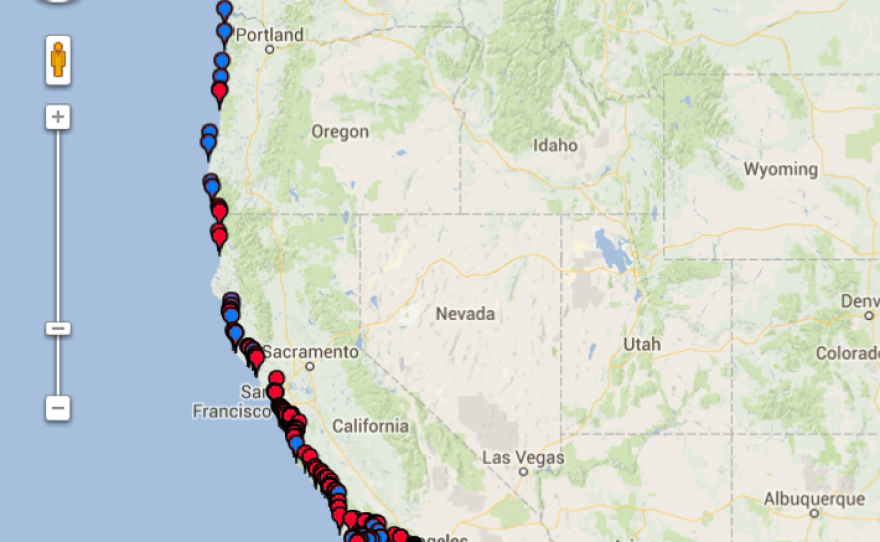Sea stars along the West Coast are being wiped out on a wide scale by a mysterious disease. There’s no evidence of the die-off in San Diego yet, but some researchers say it seems inevitable.
Scientists are calling the epidemic sea star wasting syndrome. It was first reported off the Washington coast in June and has since spread south to Orange County, and 70 miles off the San Diego coast at San Clemente Island.
"The first thing to happen is lesions will form," said Keith Lombardo, chief of natural resources with the Cabrillo National Monument, where an abundance of tide pools offer a window into the intertidal Pacific Ocean.
"And then the lesions begin to actually dissolve the sea star, and when that begins to happen the sea star is no longer able to hold onto rock," Lombardo said.
Lombardo and a team of San Diego researchers are monitoring waters off San Diego for signs of wasting syndrome. So far there are no confirmed reports of the disease, but Lombardo said it seems inevitable.
"The California current runs north to south right along the California coastline," Lombardo said. "So the disease is probably following that current, which is why it’s spreading so rapidly down the coastline."

Sea stars, also known as star fish, are natural predators. They feed on mussels and clams and other inter-tidal species.
"It’s an aggressive feeder, so you remove that component of the ecosystem, you’re going to have all these trickle down effects and trickle up effects of other organism in the inter-tidal," said Lombardo.
Wasting syndrome has happened before, but on a much smaller and more localized scale. The last significant outbreak was in 1983 and 1984 during an El Niño year when the water was warm. Lombardo said this time, the extent of the disease is "very concerning."
"I think this is a natural event, but being that it’s so vast in extent and there could be some tie-in to bigger changes like climate change."
Researchers are focusing on a bacterial or viral pathogen as a possible cause, but they’re not ruling out rising ocean acidification, low oxygen levels and warming waters.
At least 10 species of sea stars are known to be affected by the disease, but the species hit hardest is the ochre star, which is commonly found near La Jolla.







